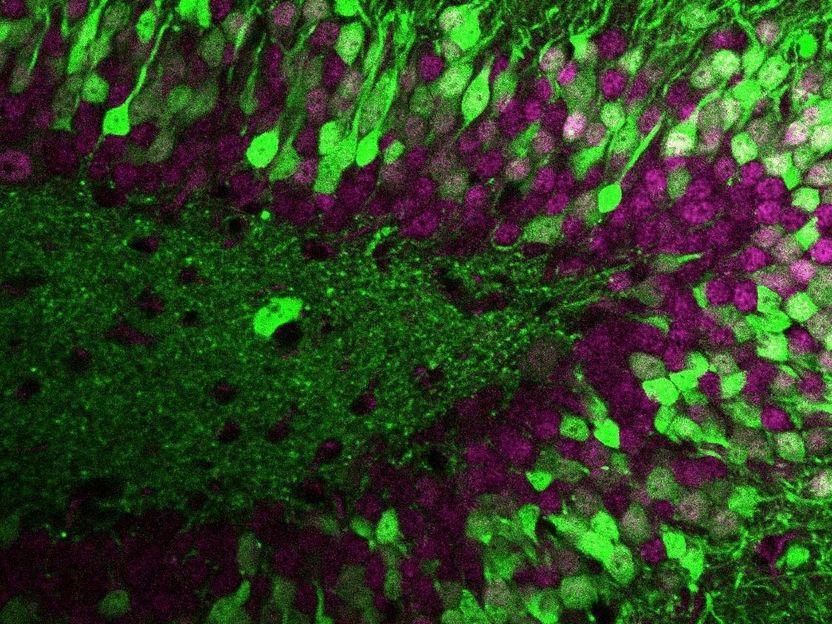Unique fingerprint: What makes nerve cells unmistakable?
Protein variations that result from the process of alternative splicing control the identity and function of nerve cells in the brain. This allows organisms to build a highly complex neuronal network with only a limited number of genes. The study describing a detailed map of neuronal splicing conducted by a research team at the Biozentrum, University of Basel, has now been published in "Nature Neuroscience".

Protein variants shape wiring of nerve cells in the brain.
Biozentrum, University of Basel
Our brain consists of hundreds, if not thousands, of different types of nerve cells that control our brain functions due to their individual characteristics. But how do the different cell types manage to develop their diverse traits? In a genome-wide analysis, the team led by Prof. Peter Scheiffele at the Biozentrum, University of Basel, has now discovered that alternative splicing leads to a broad range of variants of individual proteins, which ultimately allows to distinguish types of nerve cells.
Alternative splicing determines cell types
Alternative splicing can generate multiple different protein variants from a single gene. In the mouse model, Scheiffele's team investigated splice variants in a panel of neuronal cell types. “We have been able to identify hundreds of splice variants that enable us to differentiate between different types of neurons,” says Scheiffele. "There are unique repertoires of variants in each nerve cell type.”
These repertoires of splice variants significantly shape the identity and function of nerve cells. “Although all neuronal cell types contain the same set of genes, even closely-related cell types produce different splice variants," explains Scheiffele. In particular, proteins located at the neuronal contact points – the synapses, which mediate the transmission and processing of information – are extremely diverse. Thus, the splicing process also controls the function of the neuronal circuits in the brain.
Data platform for scientists
The generation and analysis of the extensive data sets is part of the EU-funded project “SPLICECODE”. In collaboration with the "Center for Scientific Computing" (sciCORE), a user-friendly website has been set up which allows scientists worldwide to investigate the role of individual splice variants in brain function.
Original publication
Other news from the department science

Get the life science industry in your inbox
By submitting this form you agree that LUMITOS AG will send you the newsletter(s) selected above by email. Your data will not be passed on to third parties. Your data will be stored and processed in accordance with our data protection regulations. LUMITOS may contact you by email for the purpose of advertising or market and opinion surveys. You can revoke your consent at any time without giving reasons to LUMITOS AG, Ernst-Augustin-Str. 2, 12489 Berlin, Germany or by e-mail at revoke@lumitos.com with effect for the future. In addition, each email contains a link to unsubscribe from the corresponding newsletter.


















































